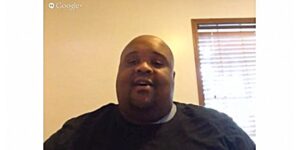
Workplace Greatness: No Guarantees #TChat Recap
What really makes “great” employers special? And can how can companies make “great” magic last? #TChat lessons learned

What really makes “great” employers special? And can how can companies make “great” magic last? #TChat lessons learned

What’s ahead in talent management for 2014? Exciting times for social media and employer brand strategy!

How can employers move the meter on their job candidate experience? Experts share survey results with the #TChat crowd

We know that mobile tools are rapidly transforming recruitment. But what about the rest of the hiring process? #TChat talks about why employers need to get ahead of the curve

What does it really mean to be a social influencer? And what does that imply for business and HR leaders? #TChat speaks

Business leaders who truly want to engage employees look beyond the obvious. Meghan M. Biro outlines 5 core questions companies should answer

Where does recruiting end and marketing begin? In today’s social workplace, it’s hard to tell the difference. What does this mean for HR professionals and processes? Let’s talk
It’s a tangled web we weave in this global economy, when companies and individuals, alike, are motivated to avoid costs of doing business. Convoluted tax codes and conflicting international regulations don’t help.
Employer brands and personal brands – is alignment required? Should employers strive to promote a fit? And what is a good balance – for better or worse? We’ll explore these issues and more at #TChat this week…
It’s no secret that organizational cultures have been hurting in recent years. But how can we expect culture to flourish on diminishing investment in the “human” side of business? And how long can HR wave its magic wand until business leaders reinforce culture at its foundations? #TChat sparked some serious questions…
An insider’s guide to talent communities: The “why”, “what” and “how” of this important new dimension in workforce management…
Be true to your brand – it’s as important for employers as it is for job candidates. Know your strengths – and know how to present them in the best light…